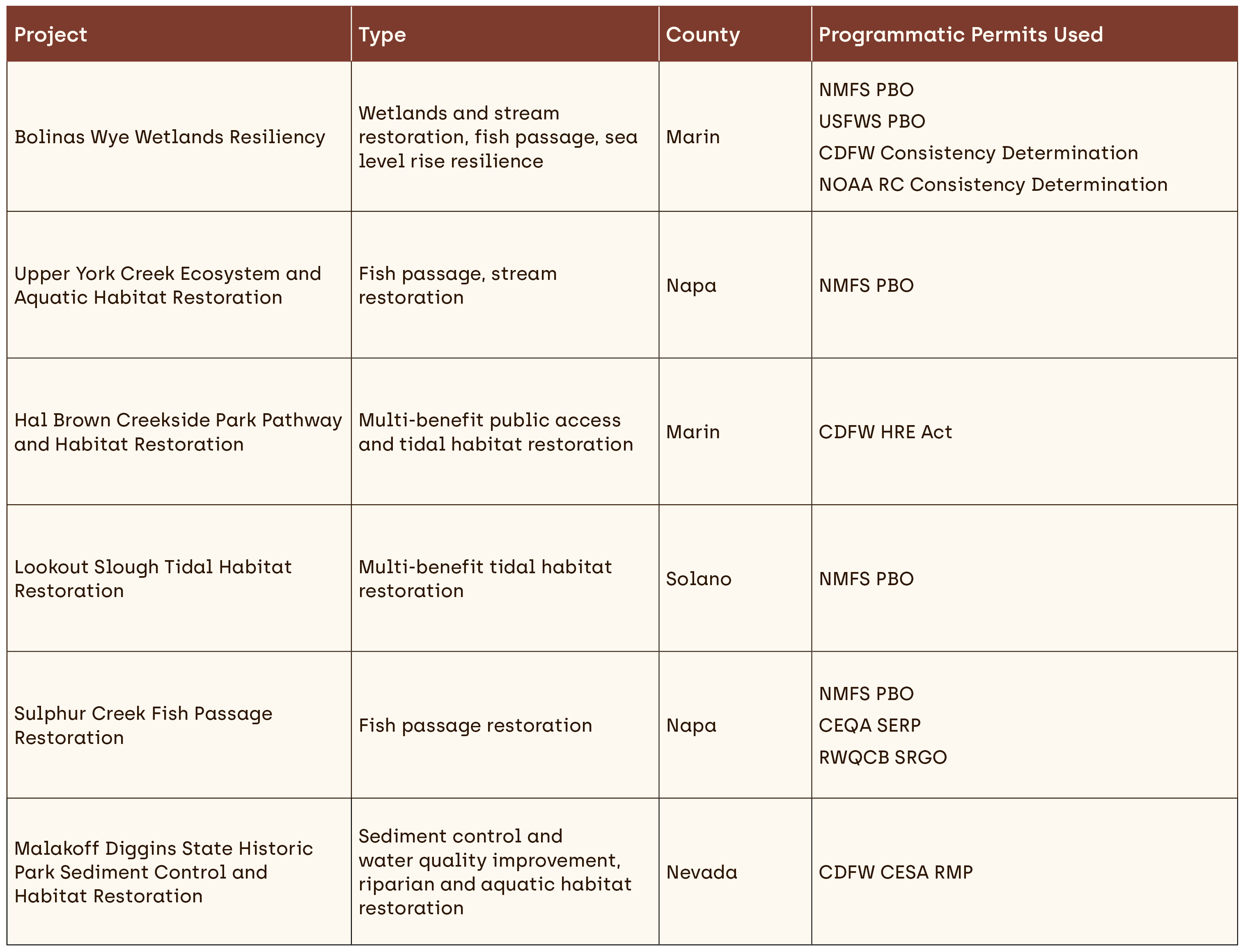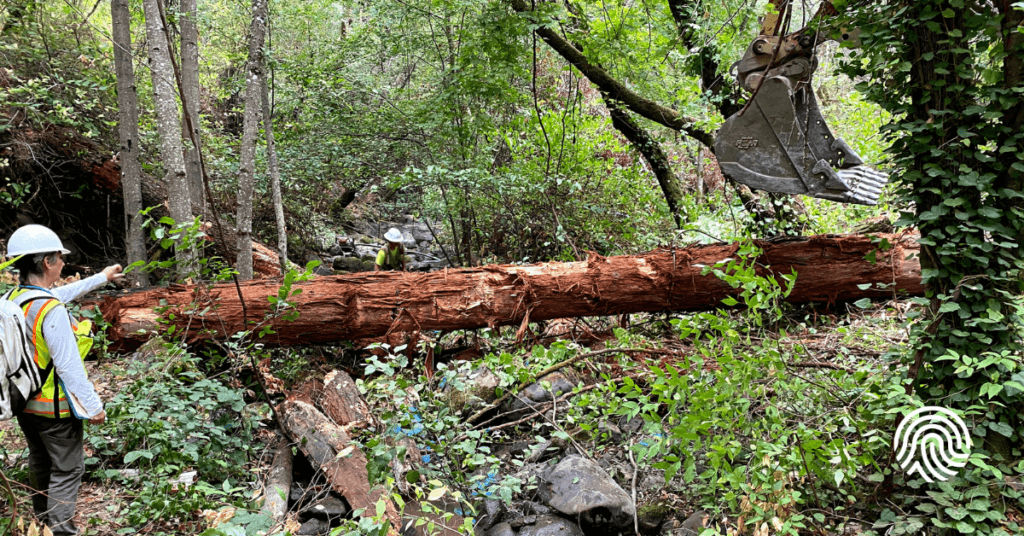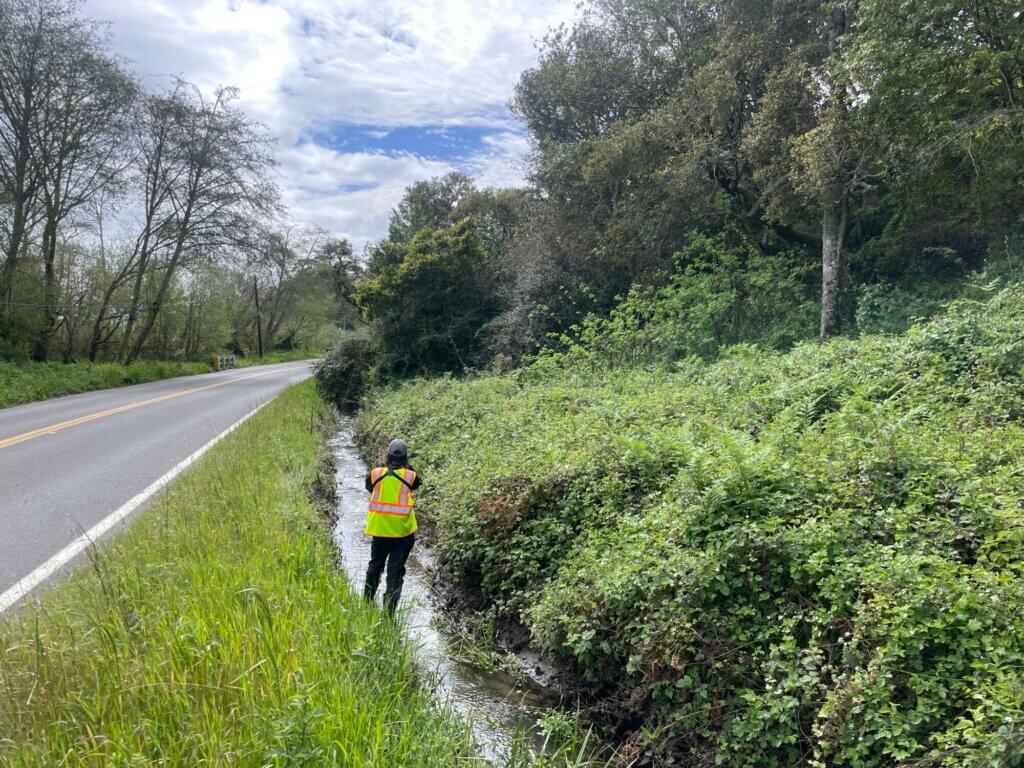Fast Lane for Restoration: How State and Federal Programmatic Approvals Can Speed Habitat Restoration Throughout California
It is hardly news to project proponents in California that the state and federal permitting process can be difficult, time-consuming, costly, and even frustrating. For years, this has held true for beneficial restoration projects as well as infrastructure and development projects.
Thankfully, in the past two decades, programmatic permitting has significantly improved environmental review and regulatory approval timelines for vitally needed habitat restoration and related multi-benefit projects. With this approach, applicants provide all the required information to comply with design guidelines and protection measures that are included as part of pre-approved permits from each agency.
Saving time and money on permitting is key for project applicants with limited budgets funded by competitive grant dollars. Shortening permitting timelines also helps communities and state and federal governmental agencies achieve conservation goals more efficiently, helping advance environmental protection in California.
Agencies have now made great progress in developing restoration permitting frameworks that are available to all applicants for a broad range of project types. Some agencies, notably the California Department of Fish and Wildlife (CDFW) and its groundbreaking Cutting the Green Tape Initiative, have even dedicated staff positions to review and approval of qualifying restoration projects in a full range of habitats statewide.
Pre-approved, efficient restoration permitting and environmental review pathways are now available for qualified projects from key state agencies:
Environmental Review: CEQA Exemptions for Restoration Projects
There are now two CEQA exemptions designed to streamline the environmental review process for qualifying restoration projects. The first is Categorical Exemption 15333 for Small Habitat Restoration Projects, adopted in 2007, and used since then to exempt many hundreds of small-scale, beneficial projects under 5 acres in size.
In 2022, the California State Legislature approved a new Statutory Exemption for Restoration Projects (SERP). The CEQA SERP removed size limitations for restoration projects – a crucial step towards more efficient approval of much-needed, large-scale restoration projects. SERP exempts qualified projects from preparation of an Initial Study/Mitigated Negative Declaration or Environmental Impact Report so long as the project will result in net benefits to species and habitats. SERP is administered by CDFW’s Cutting the Green Tape staff, which works with the project applicant early in the process to determine likely eligibility. Following the submittal of a “SERP Concurrence Request,” CDFW reviews all project information and can then issue a formal concurrence for qualifying projects.
Programmatic Permits and Approvals
Regional Water Quality Control Board (RWQCB) – Sec. 401 Water Quality Certification
California’s State and Regional Water Boards offer two General Orders covering Section 401 Water Quality Certification and Waste Discharge Requirements – one for small-scale projects, the Small Habitat Restoration Projects General Order, and the Statewide Restoration General Order (SRGO), approved in 2022, for larger projects. As another CEQA option, the SRGO also has a companion Program Environmental Impact Report (PEIR) which the RWQCB can utilize as lead agency for CEQA review.
California Department of Fish and Wildlife (CDFW) – Sec. 1602 Agreement and Sec. 2081 Incidental Take Permit
CDFW provides efficient Section 1602 Lake and Streambed Alteration Agreement (LSA) and California Endangered Species Act (CESA) approval through the Habitat Restoration and Enhancement (HRE) Act for Small Habitat Restoration Projects, Restoration Management Permit (RMP), and Consistency Determination (CD) permitting options, coordinated by the Cutting Green Tape team.
National Marine Fisheries Service (NMFS) – Sec. 7 Biological Opinions for Restoration in California
NMFS has developed Programmatic Biological Opinions (PBOs) for the North Coast, Central Coast, South Coast, and Central Valley/Delta, covering restoration in anadromous fish habitat (streams where salmon, steelhead, and sturgeon occur) throughout the entire state.
United States Fish and Wildlife Service (USFWS) – Sec. 7 Biological Opinion for Restoration in California
In 2022, USFWS culminated a multi-year effort with a first-in-the-nation Programmatic Biological and Conference Opinion: Statewide Programmatic Restoration Effort. This PBO for restoration is available for Section 7 Consultation with all federal agencies, covering 72 species commonly encountered at restoration project sites.
National Oceanic and Atmospheric Administration (NOAA) Restoration Center
The NOAA Restoration Center has worked with the California Coastal Commission to provide Federal Consistency Determinations for Programmatic Coastal Zone approval on the North/Central Coast and South Coast for qualified restoration projects within the jurisdiction of the Commission or approved Local Coastal Programs on the state’s entire coastline. The NOAA RC has also completed a Program Environmental Impact Statement (PEIS) for Habitat Restoration Activities that can be utilized for NEPA review by federal agencies.
Demonstrated Success
Programmatic approvals have been very successful! For example, CDFW has issued 53 project concurrences using the CEQA SERP exemption in just over two years, saving on average seven months of time for environmental review for each project, and per project depending on its complexity. CDFW has also approved the use of 36 Consistency Determinations or Restoration Management Permits for California Endangered Species Act compliance. CDFW’s Cutting the Green Tape team and regional offices have approved more than 200 projects throughout the state using the array of permitting tools that the agency now has at its disposal. On the federal side, Programmatic BOs from NMFS have greatly reduced Section 7 consultation timeframes for hundreds of aquatic habitat restoration projects in all regions of California.
How WRA Can Help
Over the past two years, WRA has helped over half a dozen projects use the many new programmatic restoration permitting pathways available across the state, often leveraging several restoration permits on a single project. WRA staff work closely with applicants and agency staff to determine whether projects are qualified for these pathways and to assess whether reasonable design modifications can improve project benefits or reduce impacts. WRA’s restoration engineers and landscape architects know how to design projects that qualify for programmatic restoration permits, including some public access and infrastructure projects that have historically been excluded from restoration permitting pathways. WRA’s permitting specialists know how to communicate project details, demonstrating eligibility for a given programmatic restoration permit and making it easier for agencies to process applications and approve projects. Applicants for distinct projects restoring habitat for fish and wildlife – along with other, complementary goals – have all benefited and had their projects approved as a result. We are proud to have worked with regional, state, and community partners on these wonderful projects (and others now in the planning and design stages).

Of course, every project is unique, not only in location, habitat, and goals, but in the regulatory review and approval process. WRA’s integrated team of biologists, planners, designers, and regulatory permitting specialists is ready to help you determine the most efficient and cost-effective permitting pathways for your restoration or multi-benefit concept or design.
WRA Contact:

Erik Schmidt
schmidt@wra-ca.com





